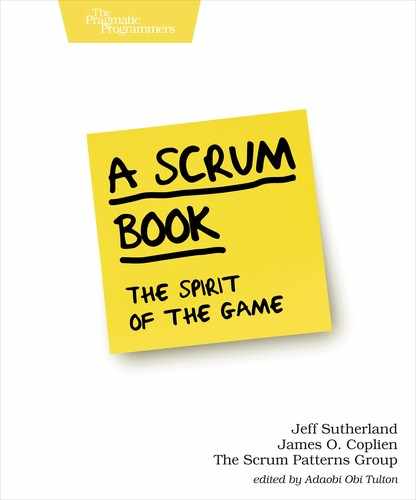Introduction
This is a book about Scrum—a simple but powerful way for people to work together. Scrum is about helping small teams create, build, and evolve a product, one slice at a time. Scrum is as much about people as it is about the products they build and use. It defines a work environment where teams can challenge themselves to become better and better at their work over time. Its simplicity is much of its power: The Scrum Guide[1] is a succinct definition of Scrum fundamentals and it’s only 19 pages long.
Scrum is not a development method, but rather a product development framework. A method prescribes steps that transform a problem definition into a solution. Scrum, on the other hand, is a framework for the team to continuously evaluate its product and evolve it into a better solution. More than that, Scrum also guides the team to continuously evaluate how it builds the product, and to creatively adapt its process to work more efficiently, deliver ever more responsively, and to grow product quality. Scrum defines how a self-managing team might best structure its work to deliver product increments to create the highest possible value for all stakeholders. Scrum focuses outward on the product that will add value to the community and to the end user, while also reflecting on how to make the development process ever more powerful, and the workplace a fulfilling and happy place. Scrum shines in complex domains where product requirements are unclear. It dissolves this uncertainty with frequent feedback, short iterations, time-boxing, and continuous workflow. Scrum is certainly the most widely adopted of all agile approaches: journalism, advertising, software development, and automobile construction are all examples of industries and professions where Scrum has made inroads.
